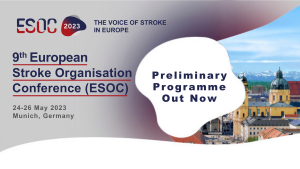 Authors: Iulia-Cosmina Stoican
Authors: Iulia-Cosmina Stoican
Twitter: @cosmina_stoican
National Institute of Neurology and Neurovascular Diseases, in Bucharest.
Infectious endocarditis might be one of the most challenging diagnoses in internal medicine, due to its polymorphic clinical picture. Infectious endocarditis can lead to neurological signs and symptoms, caused mostly by embolic events. The Duke criteria have become a great tool for evaluating clinical cases and classifying them into definite/possible/rejected cases of infectious endocarditis since the 1990’s1. This evaluation helped clinicians in choosing further investigations and treatment.
However, times have changed and MRI is now an important imaging study and even neurologically asymptomatic patients can show various abnormalities on brain MRI. A study conducted in 2009 covered the subject of arterial brain embolisms in infectious endocarditis, comparing the neurological examination with the MRI results. Only 25% of the patients had neurological exam abnormalities consistent with a stroke, while MRI proved ischemic events in 80% of the patients2. Clinicians should be aware of the impact brought by brain MRI when it comes to ischemic events, considering that this could change the clinical course of the patients in terms of treatment, as embolic phenomena represent one of the Duke criteria.
Another study performed in France on a larger population showed similar results regarding the correlation between the neurological exam and clinically silent brain MRI lesions. Moreover, it was shown how performing cerebral MRI could change the course of treatment, due to the fact that it updated the diagnosis for 32% of the patients to possible/definite case of infectious endocarditis, considering the Duke criteria3,4. Furthermore, there were 3 deaths of neurologically asymptomatic patients during the follow-up period and abnormal findings on cerebral MRI should raise concern in terms of further complications, such as recurrence or hemorrhagic transformation, despite the normal neurological exam3.
There is also another important concern regarding brain MRI abnormalities and that is the finding of cerebral microbleeds. These microhemorrhages are not included in the Duke (or the modified Duke) criteria and they are usually attributed to amyloid angiopathy or hypertensive vasculopathy, with characteristic patterns of distribution in the brain, based on the underlying microvascular changes5. Several studies have shown that infectious endocarditis can present with cerebral microbleeds at the MRI examination, also in asymptomatic patients4. Some of these studies have reported cerebral microbleeds as the most frequent brain lesion found in patients with infectious endocarditis3,6. Taking these into account, the recognition of cerebral microbleeds as usual findings in infective endocarditis could also change the impact of brain MRI for patients with high clinical suspicion.
We can conclude that brain MRI is definitely an important tool in infectious endocarditis for patients with and without neurological signs. However, further studies are needed to describe MRI lesions and their sensitivity and specificity for the diagnosis of infectious endocarditis (especially since coexisting small vessel disease might cause similar radiological findings). Eventually, an updated list of criteria could include cerebral abnormalities seen on MRI, which might help us in an earlier diagnosis and treatment.
—
References:
- Li, J. S. et al. Proposed Modifications to the Duke Criteria for the Diagnosis of Infective Endocarditis. Clin. Infect. Dis. 30, 633–638 (2000).
- Cooper, H. A. et al. Subclinical Brain Embolization in Left-Sided Infective Endocarditis: Results From the Evaluation by MRI of the Brains of Patients With Left-Sided Intracardiac Solid Masses (EMBOLISM) Pilot Study. Circulation 120, 585–591 (2009).
- Duval, X. Effect of Early Cerebral Magnetic Resonance Imaging on Clinical Decisions in Infective Endocarditis: A Prospective Study. Ann. Intern. Med. 152, 497 (2010).
- Champey, J. et al. Value of brain MRI in infective endocarditis: a narrative literature review. Eur. J. Clin. Microbiol. Infect. Dis. 35, 159–168 (2016).
- Jung, Y. H. et al. Strictly Lobar Microbleeds Reflect Amyloid Angiopathy Regardless of Cerebral and Cerebellar Compartments. Stroke 51, 3600–3607 (2020).
- Hess, A. et al. Brain MRI Findings in Neurologically Asymptomatic Patients with Infective Endocarditis. Am. J. Neuroradiol. 34, 1579–1584 (2013).
ESOC is Europe’s leading forum for advances in research and clinical care of patients with cerebrovascular diseases. ESOC 2023 will live up to its expectation, and present to you a packed, high quality scientific programme including major clinical trials, state-of-the-art seminars, educational workshops, scientific communications of the latest research, and debates about current controversies. ESOC 2023 programme is now available, and registration and abstract submission are now open. Learn more here.



